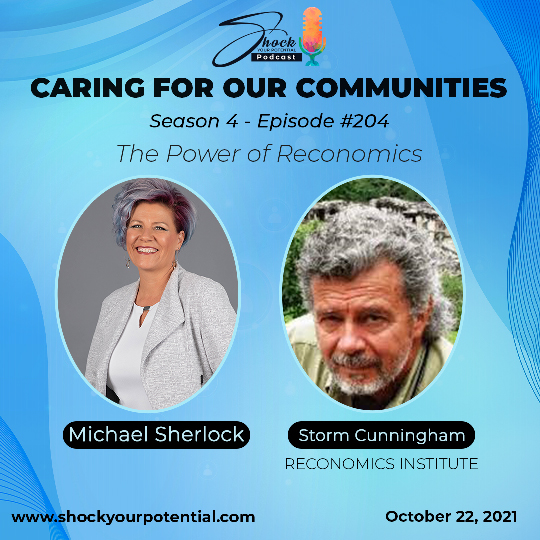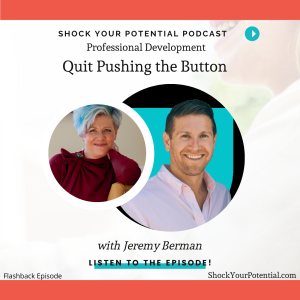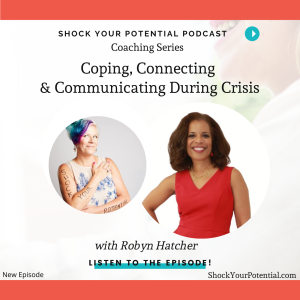“What we restore restores us, what we revitalize revitalizes us.” Storm Cunningham
For communities to remain stable and thrive, effort needs to be directed towards strengthening and diversifying the existing elements. However, most communities struggle with community development projects due to a lack of understanding of and failure to integrate processes in their implementation. Our guest today, Storm Cunningham has decades of experience working in community development initiatives across the world and reiterates the importance of creating processes that guide these initiatives as well as having people who can facilitate the processes.
Based in Washington DC for the past 30 years, Storm primarily focuses on the three areas which include Community renewal, nature restoration and climate resilience. He is also an author of three books his latest release being ‘Reconomics,’ and does inspirational talks and how-to workshops for non-profits & governments worldwide.
A former Green Beret, his hard-hitting, humorous, silo-busting talks can focus on multiple areas including water, housing, job growth, energy, transportation, agriculture, natural resources, downtowns, brownfields, heritage, climate, social justice or education.
In today’s episode, Storm will talk about what makes sustainable communities especially the initiatives that ensure resilience and revitalization. He will also highlight the principles that ensure the minimum viable process when carrying out community initiatives.
Listen in!
Social Media:
https://www.linkedin.com/in/restorm
https://www.facebook.com/storm.cunningham
https://www.patreon.com/stormcunningham
- One thing I’ve learned is that most communities need to be shocked big time everywhere you go. [3:32]
- Communities have revitalization and resilience initiatives underway but hardly anybody is accomplishing anywhere near what they’re hoping to accomplish. [3:46]
- One of the most common reasons is that most communities suffer from perpetual planning syndrome. [4:41]
- Some communities have dedicated leaders who are honestly trying to revitalize or become more resilient but don’t know how since they’ve gotten no training in this. [6:18]
- They’re no real degrees and how to revitalize but you can more reliably manage emergent complexities if you have an actual process. [6:32]
- The world knows you need a process to reliably produce anything but the people who run communities don’t seem to know that. [7:10]
- The focus of my most recent book, ‘Reconomics,’ is that process. [7:24]
- I’ve spent the last 20 years tracking down exactly what is the minimum viable process that needs to be in place in a community to reliably produce revitalization or resilience? [7:29]
- Most places are good at projects and most do succeed but the trouble is the projects don’t produce revitalization. [9:03]
- Projects are the last step of the revitalization process where before you get to that kind of action, you need to lay the groundwork to make sure that the momentum from each successful project is captured. [9:42]
- The end goal that you’re shooting for at least amongst their goals is increasing the confidence in their future. [10:01]
- By not increasing the confidence in the future of a place, you’re going to continue losing residents, employers and investors, and you’re not going to be attracting new ones. [10:22]
- You need to have an ongoing program because revitalization and regeneration is something that needs to be happening every moment of every day. [10:36]
- As I describe in Reconomics, the home for this ongoing program should not be a government agency, it should not be subject to the vicissitudes of changes of administration. [11:57]
- Some projects do this is a strategy, I call the three re strategy, which is repurpose, renew, reconnect and when that’s put into effect, real magic can happen. [16:02]
- If a project is big enough, ambitious enough, and uses the right strategy, it can revitalize, but the best thing is to have a complete process. [16:17]
- Commercial break. [20:32]
- The easiest way to overcome the credibility factor in terms of can we revitalize is to tell stories and showing communities that had similar problems who overcame them. [22:45]
- Two sources for the credibility problem include genuine skepticism arising from false promises and failed projects and people seeing revitalization as a mystery that probably cannot be successfully engineered. [23:03]
- Our focus at economics Institute economics.org is on certifying revitalization and resilience facilitators. [24:31]
- The first step to help communities create these processes is having somebody who knows what the process i. [24:52]
- The facilitators basically can take a look at what the community is currently doing and do a gap analysis and fill in until they get that minimum viable process, which just has six parts. [25:14]
- The six elements make the minimum viable process so you can add to it but can’t take away as this is the minimum that’s necessary to have a reliable process to produce revitalization and resilience. [25:54]
- The first job of that ongoing program is to create a shared vision of the future. [26:16]
- The next step is to have a strategy to overcome the primary obstacles to achieving that vision. [26:26]
- The next is taking a look at the policies and find out what policies are going to get in the way of achieving that strategy and vision. [26:46]
- The fourth step is going ahead and putting together some partnerships. [27:01]
- The last step is using the resources that the partnerships bring to the table to do the actual projects. [27:08]
- It’s not enough just to have a program vision strategy, policies, partnerships and projects, each one of them has to be regenerative to produce revitalization and resilience
- Both revitalization and resilience are based on repurposing, renewing and reconnecting and are natural and built-in socio-economic environments.
- By combining them, now, you’ve got the short term benefits of revitalization with the long term benefits of resilience, which helps fund and build public support for both of them.
- This doesn’t have to be done as a profession, we’ve got people who are becoming certified revitalization resilience facilitators because they want to be more effective volunteers.
- What we restore restores us, what we revitalize revitalizes us.
…………………..…..
TopDog Learning Group, LLC is a leadership, change management, and diversity and inclusion consulting firm based in Orlando, FL, USA but with “TopDoggers” (aka consultants) throughout North America and beyond.
They focus on training programs (both virtual and face-to-face), keynotes and “lunch and learns,” group and 1:1 coaching, and off-the-shelf solutions.
One such solution is their Masterclass on The Top 3 Strategies to be Resilient in Times of Change.
This thoughtful self-paced online training will guide you through three tactics you can immediately use to—not just survive—but thrive when change comes at you.
Use the code RESIL50OFF for 50% off the program! Just go to https://bit.ly/3a5mIS6 and enter the code RESIL50OFF, in all capitals, to redeem your 50% off coupon. The link and code will be available in our show notes for easy access.




